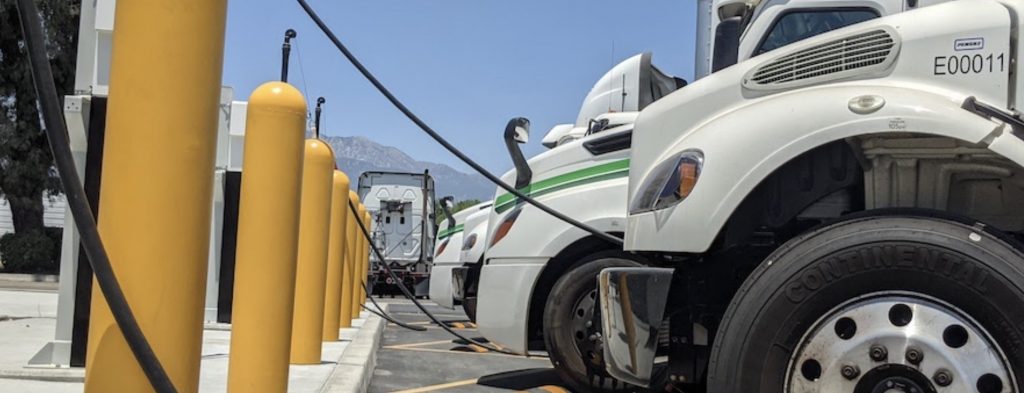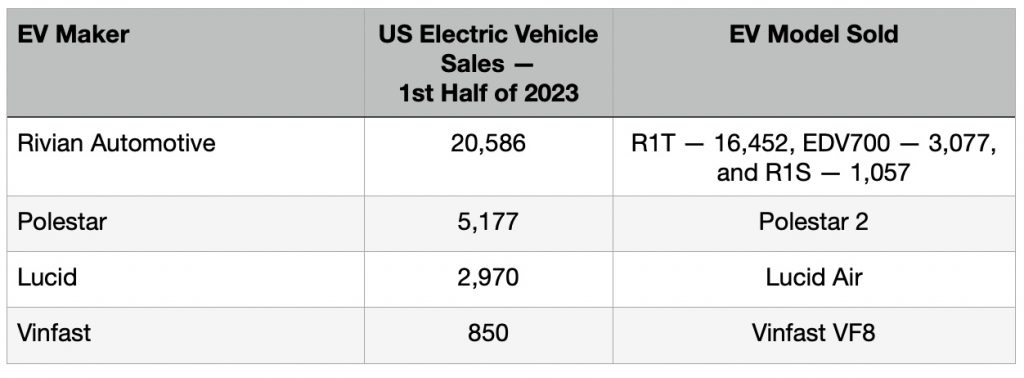
We’re three months away from new trucks having to register in California Air Resources Board’s TRUCRS online system to conduct drayage activities in the state. Those new trucks will have to emit zero emissions, running on batteries or hydrogen fuel cells.
Los Angeles Transportation Club hosted a speaker panel in Long Beach on Wednesday, Sept. 27, to discuss CARB’s Advanced Clean Fleets regulation, which was approved on April 28. The regulation’s first phase applies to trucks performing drayage operations at seaports and railyards, fleets owned by State, local, and federal government agencies, and high priority, last-mile, delivery fleets.
Bill Robertson, vehicle program specialist, Mobile Source Control Division at CARB; Matt Schrap, CEO of the Harbor Trucking Association; Mike Gallagher, head of indirect sourcing, North America at Performance Team; and Matt LeDucq, CEO of Forum Mobility, spoke on a panel chaired by Bill Mongelluzzo, a senior editor at The Journal of Commerce.
The reasons for California going in this direction are clear with the health risks built in for those living near the ports and freeways where heavy-duty diesel trucks pass through; and for the impact medium- and heavy-duty trucks have on carbon emissions and climate change. But the hurdles are high for fleets to clear for all of it to work under the new rules.
Forum Mobility is currently developing a network of charging depots around the Oakland and Los Angeles and Long Beach ports, and along common trucking routes to warehouse destinations. The company is also putting together a $100 million charging infrastructure from Long Beach to Compton and Fontana. Forum Mobility is bringing in third-party capital to build the needed infrastructure.
LeDucq said that 50 to 150 trucks are typically using Forum Mobility’s charging network. One of the challenges his company, and all the supporters of clean transportation in the state, have to overcome is working with smaller companies to bring in the electric trucks they’ll need to serve the ports. They may be starting with five-to-10 electric trucks, but the cost and steps needing to be taken, can seem overwhelming for these small-to-medium sized truck fleets.
Legal fights expected soon
Schrap expects to see legal battles flare up soon as fleets grapple with meeting the ACF rules. An electric heavy-duty truck costs about $500,000 or more to purchase, and the charging infrastructure is still in its early phase. The megawatts needed to charge all these trucks will need to be set up for these mandates to be served, Schrap said. In his role heading up HTA, Schrap has been heavily involved in clean truck rules since 2005. There is certainly a lot to learn, he said.
“It’s tough to go buy trucks when there’s nowhere to charge them. It’s a chicken and egg” conundrum, Schrap said.
In May, the American Trucking Associations criticized the ACF regulations. ATA President and CEO, Chris Spear, said the state’s rule ignores the electric trucks are in their early stage, and the charging infrastructure needed to support them doesn’t exist yet.
The cost of these electric and hydrogen-power trucks are being offset by state incentives, and through project funding available to the ports through SCAQMD and other agencies. The federal Inflation Reduction Act of 2022 included commercial vehicles in its tax incentives. The legislation includes a tax credit for the purchase of electric commercial vehicles that’s equal to 30% of the vehicle’s purchase price, up to $40,000 per unit.
CARB’s Robertson said that the agency has to take a “push with the pull” approach that comes from integrating the Advanced Clean Trucks rule that’s already in place and the ACF going online in a few months. It’s also about the number of regulatory agencies involved with clean vehicle programs around the state — from South Coast Air Quality Management District, and the San Joaquin valley and Bay Area districts, the California Energy Commission, Gov. Gavin Newson’s executive orders, and state laws.
Fleet operators, truck makers, charging infrastructure suppliers, government officials, commercial property owners and developers, and transportation networking groups, have to stay well informed on all of it. The incentives are a necessity to tap into, and fleets need to make sure they’ve got all the bases covered when acquiring clean vehicles and setting up their charging networks, and having access to hydrogen stations.
Performance Team, a third-party logistics company acquired by Maersk in 2020, has a lot of experience tapping into these programs and testing clean vehicles in its warehousing, distribution, consolidated, and transportation operations. The company currently operates more than 60 distribution and fulfillment center locations in North America. Gallagher said that in August, the company hit the “one million mile” mark for clean vehicles used in its local fleet.
His company has to take a careful look at which locations should be getting the charging infrastructure set up. That has a lot to do with how much ground space if available at these sites to place the chargers, Gallagher said.
Another concern has been fluctuating prices for California’s low carbon fuel standard credits. Prices have come down to about $70 per credit recently, after having been up at the $200 level not long ago. Fleet operators would like to sell their credits to regulated companies that need to buy them — and would love to see the credit prices stay high.
How phase-in process will work
CARB is taking a phase-in approach to hitting the targets. Non-zero-emission “legacy” drayage trucks may register in the system through December 31, 2023. ACF allows drayage and high priority and federal fleets to continue using their existing trucks until the earlier of 18 years or 800,000 miles, or a minimum of 13 years if the truck has over 800,000 miles. All drayage trucks entering seaports and intermodal railyards would be required to be zero-emission by 2035.
New trucks coming in after January 1, 2024, will have to be zero emissions — electric and hydrogen fuel cell medium-to-heavy duty trucks. CARB is requiring:
* 100 percent zero-emission drayage trucks, last-mile delivery, and government fleets by 2035.
* 100 percent zero-emission refuse trucks and local buses by 2040.
* and 100 percent zero-emission capable utility fleets by 2040.
Trucks will have to be active in CARB’s registry, and come to a port at least once a year.
The end goal is to have fleet operators of medium- and heavy-duty vehicles in California purchase and operate ZEVs by 2045. For vehicle makers, CARB wants them to sell only zero emission Class 2b-8 vehicles starting in 2036.
Outside of California, New Jersey is adopting similar rules and incentives as California has in place. Washington and Oregon appear ready to head in this direction, too, and other states are considering it.
And in other news………
House bill could stop California and other states from limiting internal combustion engine vehicles.
Tesla Cybertruck launch coming up
Run on Less started by NACFE
Hilton joins other hotel chains in adding EV charging stations
Largest hydrogen stations for heavy trucks coming to Port of Oakland
Toyota Land Cruiser brings back classic 1958 look


